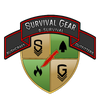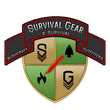7 Survival Skills You Can Learn On Your Own

Learning how to become a survivalist can seem like an impossible undertaking, but there are actually many resources available to help you get started at home. Some skills can be learned with specific courses, books, or digital resources. Others can be learned all by yourself by means of exposure and repetitive practice. For people ready to become true survivalists, it’s vitally important to learn certain survival skills before taking on the wilderness. Here are seven survival skills you can learn in the comforts of your own neighborhood.
First Aid
First aid should be one of the very first skills you master before attempting to go on any survivalist expedition. When you’re out in the wilderness, there won’t be any doctors available to help you. Thankfully, first aid is something you can practice outside of the woods. In fact, some employers require their team members to be certified in first aid depending on the career.
There are plenty of first aid courses for everyday people ranging in difficulty and specialty. First aid courses can teach you skills as customary as CPR to lesser known actions like making a tourniquet. If you plan to backpack or bushcraft, we highly recommend taking an official wilderness first aid course to learn how to survive severe injuries and illnesses caused by natural accidents.
Finding Water Sources
The human body can only survive for three days without water, and if you’re in a dire situation, dehydration can kill you fast. When you’re out in the wilderness, you’ll have to find and collect water from nearby streams and rivers. Unfortunately, many natural bodies of water contain nasty bacteria and viruses. Thus, you’ll need to learn how to purify and filter water on your own.
The good news is that you can easily practice finding and purifying water at home. If you’re still a beginner, start by locating nearby bodies of water. This can even be done in urban areas so long as there’s a creek nearby. Listen for sounds of aquatic wildlife like amphibians and notice if there’s surrounding greenery. To practice purification and filtering, find a nearby nature trail or take advantage of a family weekend camping trip to test out your skills.
Foraging
If you’re still a beginner or don’t intend to hunt for survival, you need to at least learn how to forage for food. For people without hunting and/or trapping skills, foraging could save your life. If you’re unfamiliar with the term, foraging refers to the gathering of berries, fruits, nuts, and seeds. These can be cooked or consumed for calories when you have no other means of food. Certain wild herbs can even be used for medicinal purposes during an emergency situation.
While foraging for goods is the easy part, the catch is knowing what you can and can’t eat. Many wild berries and nuts look edible, but they’re not always good for you. Some can be lethally poisonous if you don’t know what you’re looking for. To practice, grab some books and begin studying different types of herbs, berries, and nuts. Do a lot of research beforehand and take a walk around some of your local nature trails to identify local edibles.
Fire Starting
Fire is a survivalist’s best friend. In an emergency situation, fire provides warmth, light, and protection from aggressive wildlife. Unfortunately, it can be difficult to start a fire, especially if you don’t have any tools or you’re experiencing wet weather conditions. It can be lifesaving to know how to build and start a fire from scratch.
If you’d like to practice at home, use your backyard fire pit. If you don’t have one, respectfully ask your neighbors, family members, or friends. Start off simple by gathering materials for the fire and using matches, flint, or a lighter. Once you feel more comfortable with the process, start weaning off of urban tools and restrict yourself to natural materials. Try challenging yourself even further by starting a fire after a recent rain or snowfall.
Tying Knots
It may seem silly, but knowing how to tie specific knots can be very helpful. Knots can help you secure a makeshift shelter, a bushcraft fishing rod, or snares. Thankfully, there are plenty of resources available to practice all kinds of knots within the comforts of your own home.
You can start by ordering a book of knots and a piece of rope. Use your book as a guide to practice knots with your favorite movie playing in the background. There are also plenty of free, digital guides available at your fingertips.
Navigation Without GPS
Even the most experienced survivalists get lost in the wilderness. When this happens, your life is immediately on the line. Regardless of whether you’re lost or not, knowing how to navigate the area can help you know where to take shelter several weeks at a time. To practice at home, start setting personal goals for yourself.
Begin by trying to drive from one location to another using only a paper map. Once you start mastering wayfinding, wean down to a compass. From there, begin researching navigational skills using the stars, sun positions, and topography orientation.
Using Bladed Equipment
Theoretically speaking, a survivalist could manage themselves in the wilderness using only a knife. While we only recommend this for the most advanced survivalists, we still stand by the fact that a good knife can be the key to wilderness survival.
This means knowing how to properly use your knife, how to store it without premature deterioration, and how to sharpen it. You can practice all these skills at home by researching how to take care of utility knives and creating makeshift tools out of branches in your backyard.







Leave a comment